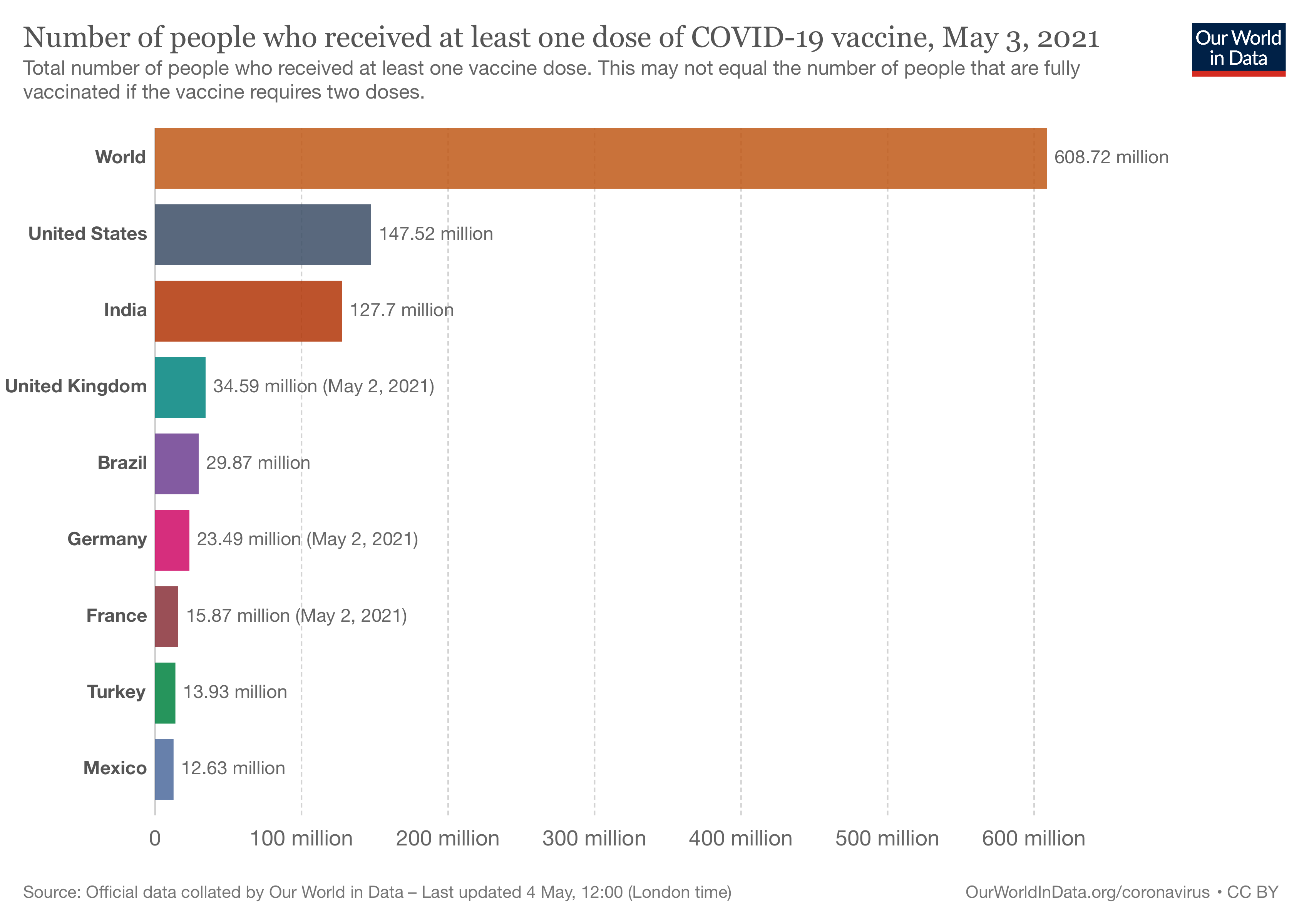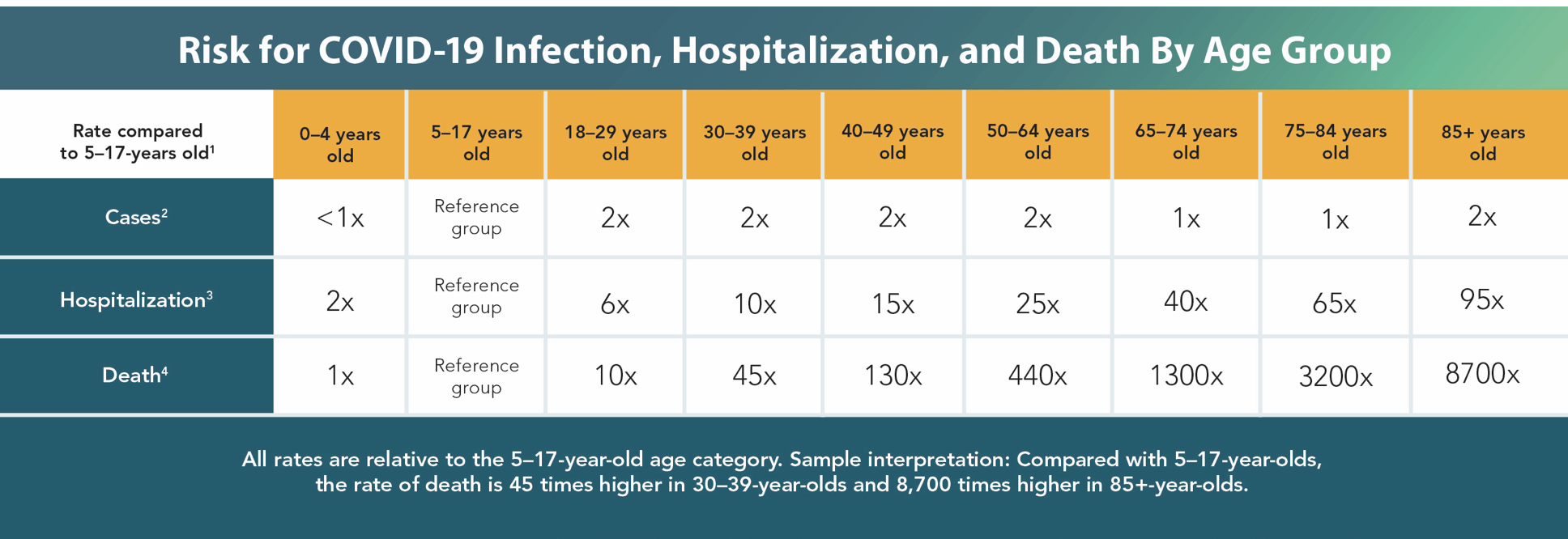
Misleading: There isn’t a blanket COVID-19 “survival rate” for everyone as implied by the meme. Every individual’s likelihood of dying from COVID-19 is different due to factors such as age and certain health conditions, like obesity and pregnancy. Furthermore, citing “survival rate” alone to suggest that COVID-19 is trivial overlooks the fact that the disease can produce persistent health problems in survivors.

FULL CLAIM: COVID-19 vaccines killed people; COVID-19 has a “99.97% survival rate”
REVIEW
Social media posts calling the safety of the COVID-19 vaccines into question commonly point to adverse events occurring after vaccination as evidence that the vaccine is responsible. As shown by this previous Health Feedback review, posts making such claims can be traced back to December 2020, when the safety data from the initial clinical trials for the first COVID-19 vaccine authorized by the U.S. Food and Drug Administration (FDA) went public.
Vaccine skeptics also commonly point to a proportion of people who died after receiving a COVID-19 vaccine as proof that the COVID-19 vaccines are dangerous. For example, this meme, published on the Facebook Page Earthley which sells herbal remedies, implied that getting COVID-19 is safer than getting the vaccine, because the disease has a “99.7% survival rate”, while the vaccine had instead caused deaths.
There are several instances of flawed reasoning that appear in the meme. One of which is the assumption that an event which followed another must have been caused by the earlier event (post hoc ergo propter hoc). While temporality is indeed a necessary criterion for determining causality, it is by no means sufficient (necessity vs. sufficiency).
In the case of vaccines, we also need to account for the fact that even unvaccinated people die for a variety of reasons. As explained in this commentary in Science Translational Medicine:
“We’re talking about treating very, very large populations, which means that you’re going to see the usual run of mortality and morbidity that you see across large samples. Specifically, if you take 10 million people and just wave your hand back and forth over their upper arms, in the next two months you would expect to see about 4,000 heart attacks. About 4,000 strokes. Over 9,000 new diagnoses of cancer. And about 14,000 of that ten million will die, out of usual all-causes mortality. No one would notice. That’s how many people die and get sick anyway.
But if you took those ten million people and gave them a new vaccine instead, there’s a real danger that those heart attacks, cancer diagnoses, and deaths will be attributed to the vaccine. I mean, if you reach a large enough population, you are literally going to have cases where someone gets the vaccine and drops dead the next day (just as they would have if they *didn’t* get the vaccine). It could prove difficult to convince that person’s friends and relatives of that lack of connection, though. Post hoc ergo propter hoc is one of the most powerful fallacies of human logic, and we’re not going to get rid of it any time soon.”
Therefore, it is necessary to compare the rate of the adverse event between the unvaccinated (baseline) and vaccinated groups. Only when the rate is significantly higher in the vaccinated group do researchers have grounds to hypothesize that there is a causal relationship. Indeed, such comparisons are what health authorities and regulatory agencies do when adverse events are reported.
For example, in the case of deaths, authorities didn’t find that vaccinated people were more likely to die compared to unvaccinated people. With regards to deaths observed during initial clinical trials, page 41 of the FDA Briefing Document for the Pfizer-BioNTech COVID-19 vaccine stated:
“A total of six (2 vaccine, 4 placebo) of 43,448 enrolled participants (0.01%) died during the reporting period from April 29, 2020 (first participant, first visit) to November 14, 2020 (cutoff date). […] All deaths represent events that occur in the general population of the age groups where they occurred, at a similar rate.” (emphasis added)
Likewise for the Moderna vaccine, the FDA Briefing Document stated on page 42:
“As of December 3, 2020, 13 deaths were reported (6 vaccine, 7 placebo). […] These deaths represent events and rates that occur in the general population of individuals in these age groups.” (emphasis added)
And following concerns over deaths in nursing home residents who had received the Pfizer-BioNTech COVID-19 vaccine, the Global Advisory Committee on Vaccine Safety (GACVS) COVID-19 Vaccine Safety subcommittee reviewed the reports of these deaths. The GACVS is “a scientific and clinical advisory body to WHO”, which “aims to provide a reliable and independent scientific assessment of vaccine safety issues”. The GACVS is not itself part of the WHO.
On 22 January 2021, the GACVS subcommittee released the following statement after completing the review:
“Based on a careful scientific review of the information made available, the subcommittee came to the following conclusions:
The current reports do not suggest any unexpected or untoward increase in fatalities in frail, elderly individuals or any unusual characteristics of adverse events following administration of BNT162b2. Reports are in line with the expected, all-cause mortality rates and causes of death in the sub-population of frail, elderly individuals, and the available information does not confirm a contributory role for the vaccine in the reported fatal events.” (emphasis added)
The bottom line is that scientists haven’t observed deaths occurring at a higher rate in vaccinated people as compared to unvaccinated people. Such an observation doesn’t support the claim that COVID-19 vaccines cause death. If this had been the case, we would have observed a significantly higher mortality rate among vaccinated people. While the number of deaths reported in some news articles may seem concerning, it is important to place these figures in the context of the hundreds of millions of people who have received at least one dose of COVID-19 vaccines. Chance alone means that a proportion among these hundreds of millions of vaccinated people will die for various reasons.

Figure 1. Number of people worldwide who received at least one dose of any COVID-19 vaccine. Data and image from Our World in Data.
The second instance of flawed reasoning in the meme is the suggestion that getting COVID-19 is safer than the vaccine, since according to the meme, COVID-19 has a “99.97% survival rate”.
This is false and misleading on multiple counts. Firstly, this implies that the only outcomes of COVID-19 are death and complete recovery. We know that this isn’t true. A certain proportion of COVID-19 survivors continue to suffer from persistent health problems, a condition termed as long COVID. Some of these problems include difficulty breathing, cognitive deficits, joint and muscle pain[1]. Long COVID is unpredictable—it can affect the young as well as the elderly. Even those with a mild case of COVID-19 can eventually develop long COVID. The physical and mental toll of this condition is detrimental to a person’s quality of life.
Secondly, the post implied that there is a single, universal “survival rate” for COVID-19 which is 99.97%. It’s unclear where this figure comes from. This is also a misleading assertion. As explained in this Health Feedback review, the likelihood of dying from COVID-19 varies a great deal at the individual level. For example, a well-known factor associated with a higher likelihood of dying from COVID-19 is advanced age.
In fact, the rise in COVID-19 mortality rate occurs fairly early on, as this table on the U.S. Centers for Disease Control and Prevention website shows. The numbers indicate that those aged 30 to 39 years old are 45 times more likely to die from COVID-19 as compared to those aged between 5 to 17 years old (reference group). Even young adults aged between 18 and 29 years old are already ten times more likely to die compared to the reference group. Hence an increased likelihood of death from COVID-19 isn’t only seen in the elderly.

Figure 2. Table comparing the risk of infection, hospitalization, and death by age group, published on this CDC webpage. All rates are relative to the 5 to 17-year-old age category. Screenshot taken on 5 May 2021.
In addition, the presence of certain health conditions, such as obesity and diabetes, as well as pregnancy, can increase a person’s likelihood of dying from COVID-19, regardless of their age.
Thirdly, the risks associated with the vaccines are considerably smaller than those associated with the disease. Take blood clotting events for example. While much concern has been raised over the increased prevalence of blood clots among people who received certain COVID-19 vaccines, it is important to remember that COVID-19 itself places a person at risk of blood clots. Preliminary findings from a preprint (a study that hasn’t yet been peer-reviewed by other scientists) estimated that the risk of cerebral venous sinus thrombosis—which is the form of blood clots linked to the AstraZeneca and Johnson & Johnson vaccines—associated with COVID-19 is between eight to ten times greater than that seen with the vaccines so far[2].
As explained in this Health Feedback review, while a person can also develop immunity to COVID-19 by getting the infection, they run the risk of death and disability from the disease. The vaccines, on the other hand, allow a person to develop immunity safely without running the same risks from the infection. And the evidence shows that the COVID-19 vaccines are highly effective in protecting people from severe disease and death. Simply put: it is safer to take the vaccine than not to.
Conclusion
In summary, such posts oversimplify the complexities involved in drawing causal associations between vaccines and adverse events, downplay the consequences of getting COVID-19, and discourage others from getting vaccinated by suggesting that vaccination is more risky than the disease. The overall effect is to mislead readers into thinking that getting COVID-19 is preferable to getting the vaccine, when the evidence points to the contrary.
REFERENCES
- 1 – Nalbandian et al. (2021) Post-acute COVID-19 syndrome. Nature Medicine.
- 2 – Taquet et al. (2021) Cerebral venous thrombosis and portal vein thrombosis: a retrospective cohort study of 537,913 COVID-19 cases. OSF. [Note: This is a pre-print that has not yet been peer-reviewed or published.]


